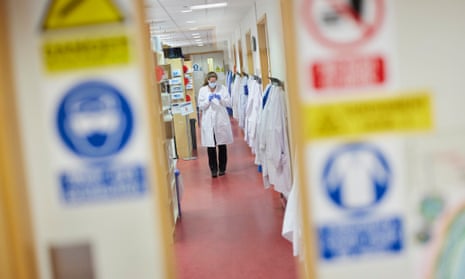A trial is likely to go ahead in January to find out whether mixing and matching Covid vaccines gives better protection than two doses of the same one, the head of the British government’s taskforce has said.
Quick GuideHow does the Pfizer/BioNTech Covid-19 vaccine work?
Show
The Pfizer/BioNTech Covid jab is an mRNA vaccine. Essentially, mRNA is a molecule used by living cells to turn the gene sequences in DNA into the proteins that are the building blocks of all their fundamental structures. A segment of DNA gets copied (“transcribed”) into a piece of mRNA, which in turn gets “read” by the cell’s tools for synthesising proteins.
In the case of an mRNA vaccine, the virus’s mRNA is injected into the muscle, and our own cells then read it and synthesise the viral protein. The immune system reacts to these proteins – which can’t by themselves cause disease – just as if they’d been carried in on the whole virus. This generates a protective response that, studies suggest, lasts for some time.
The two first Covid-19 vaccines to announce phase 3 three trial results were mRNA-based. They were first off the blocks because, as soon as the genetic code of Sars-CoV-2 was known – it was published by the Chinese in January 2020 – companies that had been working on this technology were able to start producing the virus’s mRNA. Making conventional vaccines takes much longer.
Adam Finn, professor of paediatrics at the Bristol Children’s Vaccine Centre, University of Bristol
The trial will begin if the University of Oxford/AstraZeneca vaccine is approved in the coming weeks, as is hoped. The treatment can only be administered with licensed vaccines.
The news comes as the first British patients begin receiving coronavirus vaccinations from Tuesday, a jab made by Pfizer/BioNTech, a week after the UK became the first country in the western world to approve a Covid vaccine.
Those who take part in January’s trial will get one shot of AstraZeneca’s vaccine and one of the Pfizer injection. A vaccine from US biotech firm Moderna will also be included if it gets approval.
Pfizer’s and Moderna’s vaccines have both been shown to have 95% efficacy at protecting people against the virus. For AstraZeneca’s, efficacy was 62% among the largest cohort given two doses, but rose to 90% among a smaller group given half a dose initially, followed by a full dose.
Kate Bingham, outgoing chair of the UK’s vaccine taskforce, said the “mix and match” trials were not about making limited supplies of the vaccines go further. The UK government has ordered 40m doses of the Pfizer vaccine and 100m of Oxford/AstraZeneca’s candidate.
“It’s not being done because of supplies,” said Bingham. “It’s to do with trying to trigger the immune response and the durability and nothing to do with what vaccines we’ve got.”
The concept is known as a heterologous prime-boost. “It means mix and matching vaccines,” said Bingham. “So you do a prime with one vaccine and then the second – whether it’s 28 days or two months or whatever the agreed periods would be – would be with a different vaccine.”
Viral-based vaccines such as the Oxford jab, which is based on a chimp common cold virus, give a much greater cellular response – prompting the T-cells to kill cells infected with the coronavirus. The mRNA vaccines, like Pfizer’s, tend to generate a bigger antibody response. So the idea is to combine them, in whichever order, to help the immune system respond more powerfully to Sars-CoV2.
“No one’s ever done it live and since we’ll have safe vaccines available we should do that study, because then we have the ability to actually produce better immune responses,” said Clive Dix, deputy chair of the taskforce.
“There is a slight benefit to it, too, in that if prime and boosting either way around work, it may help with the deployment, because it might just be simpler to deploy that way round, but the main reason is to get a stronger immune response.”
Bingham and Dix were speaking at the launch of a progress report on the first six months of the taskforce, which has secured deals for seven different vaccines for the UK.
Three of them – Oxford/AstraZeneca, Valneva and Novavax – are being manufactured in the UK. The first doses of the AstraZeneca vaccine have been made in the Netherlands and Germany, but 4m doses are already in the country and most of the rest of the supply will be UK-manufactured.
There remain questions over when the Oxford/AstraZeneca vaccine will be approved. The UK regulator has been asked by the government to appraise it following a rolling review, assessing all data and information on safety and efficacy and the quality of the product over recent months as it has become available. But the full data from the late-stage clinical trials, involving 24,000 people, have not yet been published and it is not known how the regulators will view the results.
Dix said the taskforce had no regrets over backing other types of vaccine over mRNA vaccines like Pfizer’s and Moderna’s, adding: “We certainly wouldn’t have got enough [of the Pfizer vaccine] to vaccinate everybody.”
They looked at Moderna but realised they could not get any doses until April, so did not sign a contract. On the day Moderna reported its results, a deal was agreed to buy 5m doses, which was later increased to 7m.
